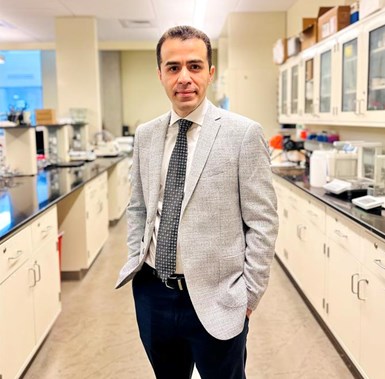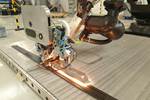Colorado State professor earns NSF award for composites 3D printing
Mechanical engineering professor Mostafa Yourdkhani’s novel in-situ printing and curing techniques for composite materials, including carbon fiber, earned him the Faculty Early Career Development Award.
As originally reported by Colorado State University (CSU, Fort Collins), mechanical engineering professor Mostafa Yourdkhani has been awarded the National Science Foundation (NSF) Faculty Early Career Development Award for his research on advanced manufacturing of composite materials.
Yourdkhani’s research program at CSU has been focused on 3D printing of composite materials, including carbon fiber. Current methods for producing these composites can be expensive, slow and energy intensive. The video shown above details recent work with his team on in-situ printing and curing of discontinuous fiber-reinforced thermoset composites. The free-from creation hardens on its own as it unfolds on a heated surface, with no mold or structure to hold it in place. Yourdkhani shows the video to illustrate that he and his graduate students have discovered a way to print carbon fiber composites in a very short amount of time with minimal heat.

Mostafa Yourdkhani in his Multifunctional Polymers and Composites Laboratory, located in the Scott Bioengineering Building on the Colorado State University campus. Photo Credit: Colorado State University
“We have developed new techniques for making these materials in just minutes, with minimum energy usage and at a much lower cost,” Yourdkhani says. “By using additive manufacturing, or 3D printing, we eliminate the need for costly molds traditionally used in the industry to shape composites.”
The CAREER award Yourdkhani has earned is one of NSF’s most prestigious awards, recognizing “early-career faculty who have the potential to serve as academic role models in research and education and to lead advances in the mission of their department or organization.”
Over the next five years, the CAREER award will support the continuation and advancement of his additive manufacturing (AM) research and his teaching. Yourdkhani plans to develop hands-on activities related to composites to encourage Colorado’s middle and high school students, particularly women and Hispanic/Latinx students, to pursue STEM education.
“I am excited to develop new courses and experiential activities to train the next generation of the composites workforce,” Yourdkhani says. He has involved students from high school to those pursuing a Ph.D. in the Multifunctional Polymers and Composites Laboratory, involving them directly on his cutting-edge composites research. “We welcome students from various backgrounds and disciplines, from engineering to chemistry to computer science, in our lab to explore new and exciting concepts that have the potential to make a meaningful impact on society and the environment.”
See Yourdkhani newest paper, published on the cover of ACS Applied Materials & Interfaces, to learn more about these technology developments.
Related Content
-
Plant tour: Joby Aviation, Marina, Calif., U.S.
As the advanced air mobility market begins to take shape, market leader Joby Aviation works to industrialize composites manufacturing for its first-generation, composites-intensive, all-electric air taxi.
-
The next evolution in AFP
Automated fiber placement develops into more compact, flexible, modular and digitized systems with multi-material and process capabilities.
-
A new era for ceramic matrix composites
CMC is expanding, with new fiber production in Europe, faster processes and higher temperature materials enabling applications for industry, hypersonics and New Space.
















